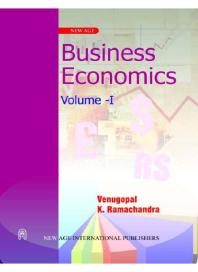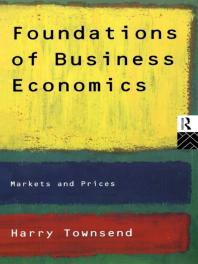
Introduction to Microeconomics
Difference between microeconomics and macroeconomics
Supply & Demand
Basic economic problem – limitation of resources and infinite wants
Production
possibility frontier – diagrammatical representation
The role of the market mechanism in the allocation of resources – supply & demand and the causes of movements and shifts of the curves
Elasticity and its application
PED – calculations, interpretation of figures, representation on a graph and changes over time
YED & XED – calculations and interpretation of figures
Incidence of taxation – a diagrammatic representation of how elasticity influences the effects of a tax
Supply decisions: costs of production
Costs and profit – as the terms are used in economics and calculations of costs
SRAC – the impact of diminishing returns on a firm’s short-run average costs (with examples)
LRAC – the impact of economics and diseconomies of scale on a firm’s long-run average costs (with examples)
Relationship between SRAC and LRAC – shown diagrammatically
Behaviour of firms (perfect competition, monopolistic competition, oligopoly and monopoly)
Market structure – the similarities and differences between the various market structures, diagrammatical representations of both the short-run and long-positions in the differing market structures, the implications in terms of a firm’s ability to earn normal versus abnormal profit and the impact upon social welfare
Price discrimination – the features needed in order for price discrimination to be possible and the impact upon social welfare
Market failure and government intervention
Externalities – the influence of social costs/ benefits differing from private costs/benefits and the implications for market-based resource allocation
Merit goods, demerit goods and public goods – key characteristics, implications in terms of being underprovided/overprovided and solutions in terms of provision
Scope of Macroeconomics:
Macroeconomic Objectives – growth; employment; inflation; balance of payments
Circular Flow – in a two sector economy
Equilibrium in the Circular Flow – National Income Identity
Measuring a nation’s income – GDP and its components. Real and Nominal GDP; GDP Deflator
GDP as a measure of well-being
National Income and Demand Management policy:
Background to Keynesian School;
AS-AD Model
Develop 45 degree line: using the income & expenditure approach.
Multiplier by graph and numeric example
Inflationary and Deflationary Gap
Fiscal Policy supported by Monetary Policy
Money and Inflation:
Money – what is it and its functions
Role of central bank
Commercial Banks; deposits; credit creation; money multiplier
Classical view; money supply, demand and equilibrium
Classical dichotomy and Money Neutrality
Quantity theory of money
Liquidity Preference:
Supply of Money – its determinants
Demand for money – transactions, precautionary and speculative link inverse with interest rates
Equilibrium and Interest Rate adjustments
Interest rate and AD
Phillips Curve Short Run and Long Run:
Background to Phillips Curve trade off
Break up of Phillips relationship
Friedman and the vertical Phillips Curve
Expectations and short run Phillips curves
NAIRU
Accelerationist Theory
International Trade:
Absolute and Comparative Advantage
Barriers to Trade: Tariffs; Quotas; Technical and Administrative barriers etc.
Arguments in favour of trade restrictions: Nurture infant industries; Soften the fall of declining industries; Protect from low wage competition; Protect from dumping; Reduce the influence of trade on consumer tastes; Promote self-sufficiency; Non economic arguments.
Trading Blocs: Free trade area; Customs Unions; Common Markets
Balance of Payments & Exchange Rates
Describe the component parts of the Balance of Payments – Current Account; Capital Account & Financial Account
Significance of Balance of Trade & Balance on Current Account
Exchange rates movements in a free market –floating exchange rate.
Floating exchange rates and the balance of payments
Fixed exchange rates – methods available to maintain a fixed exchange rate
Fixed and floating exchange rates – advantages and disadvantages of both
Review in preparation for final examination
Final Examination

